How to Diagnose and Reduce Churn for Your Mobile App Using Analytics
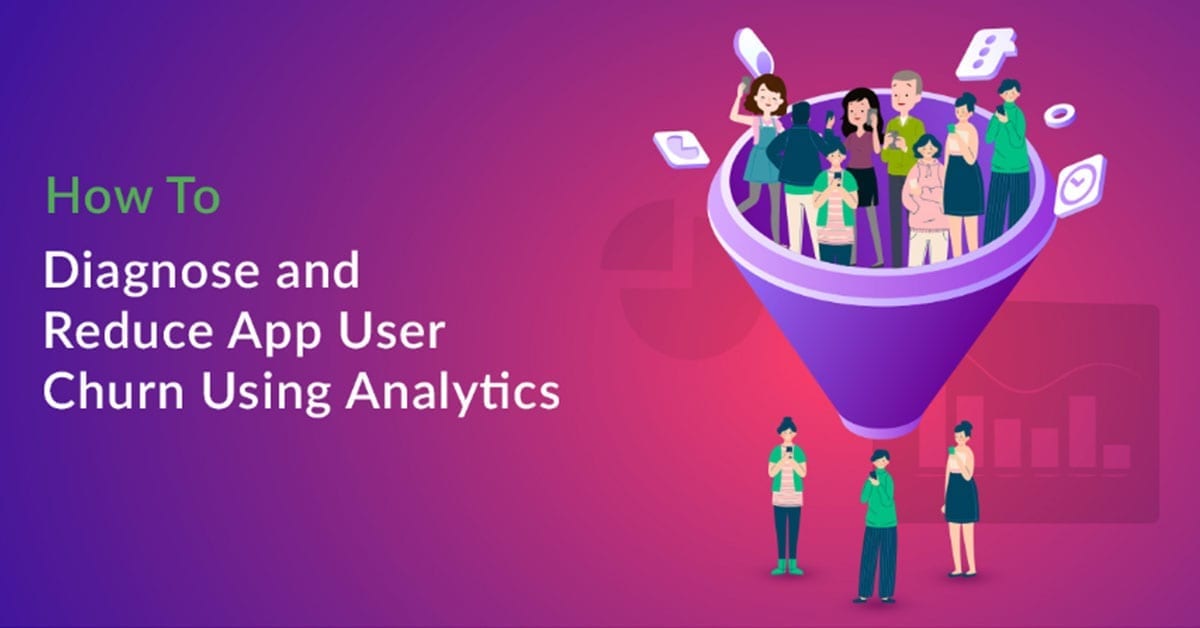
Reading Time: 14 minutes
|
In 2009, William Tanuwijaya started Tokopedia, an eCommerce marketplace, with the aim to help Indonesian local shopkeepers sell their products. Over the last decade, it’s grown to become an all-encompassing super app where users can buy and sell products, pay their electricity bills, recharge their phones, and do a whole lot more.
Today, Tokopedia is one of the 4 Indonesian unicorns. But it’s been anything but a smooth ride to the top.
UPDATE: As of April 2021, Tokopedia has merged with ride-hailing and payments giant Gojek to form GoTo.
In late 2016, the team at Tokopedia noticed an alarming trend that, unless quickly addressed, could hurt their growth. They found that most of their new users were uninstalling their mobile app before spending even a month on the platform – 60%, to be precise. Being a platform that provided services that users would invariably need at some point, this was a major concern.
This is far from a one-off case. Most mobile marketers who initially focus on user acquisition, reach a point where it’s no longer enough to sustain growth. In order to attain exponential scale, they need to reduce customer churn by getting their existing users to keep coming back and buying from them.
Bonus Content
|
If you’re at a stage where your growth has flatlined, and your user acquisition tactics are just not cutting it anymore, that’s because it costs about 5-7X more to acquire a new customer than to sell to an existing one. If you retain your existing customers, you can allocate the cost savings towards acquiring new customers and retain them, and so on, to supercharge your growth.
Previously, we’ve covered how you can use cohort analysis to measure customer retention. In this article, we’ll go over a series of steps to help you diagnose and reduce churn using a combination of conversion funnel analysis and cohort analysis.
First, a fairly common question that may or may not have one right answer.
Get uninstall trends for e-commerce apps in SEA and factors influencing these trends such as sessions, transactions, notifications, device type, user demographics, and more.
The Churn vs. Retention comparison
How do you define retention? Well, it may vary depending on your industry.
Some mobile marketers consider churn and retention to be two sides of the same coin, so the users who uninstall determines your churn rate, and the remaining users are the ones you retain. This makes sense if your users don’t need or use the app on a regular basis, for instance, a fashion marketplace specifically for sunglasses.
Others draw a clear distinction between the two. For instance, if you have an app that is used on almost a daily basis, you’d want to monitor return visits more closely than uninstalls. So that becomes your retention. Some examples of this would be social media apps, Spotify, Medium, etc.
For the sake of simplicity, I’ll be using “retention” for users who didn’t churn, and “return visits” or “engagement” for users who return to your app on a periodic basis. Often, when we’re tasked with reducing churn, we jump right into ideas. That approach of trying to solve the problem without fully understanding it is terribly inefficient. Rather than mindlessly throwing money at the problem and hoping that something works, take a step back and start with diagnosing its root cause.
So, how do you diagnose Churn?
If you’re a marketer, the chances of you not knowing what an app’s AHA moment is, are pretty slim. It’s basically the moment when a user discovers the value of your app and falls in love with it. And it’s the holy grail of user retention and loyalty for mobile marketers.
I’ll get to how you can find out your app’s AHA moment. First, let’s go through the tactical process for analyzing and diagnosing churn using data.
The experience a user has shortly after they install your app can make or break things for you. You can get insights into the health of your app by analyzing what happens during the days following an install. Once you know what exactly is working and what’s not, you’re in a great position to take action.
Here are the steps you’d follow to diagnose churn for your app:
- Get a general sense of your churn rate
- Find out your app’s AHA moment
- Check the conversion to AHA moment
- Split uninstalls by engagement frequency
We’ll call it the “CACE” framework (pronounced as, but not to be confused with, “case”) to make it easy to remember.
If you’d prefer to watch a brief video explaining the steps before diving in, here you go.
Ready? Let’s go.
STEP 1: Get a general sense of your churn rate
To begin with, look at a funnel of all the users who installed the app vs. the ones who uninstalled it in a given time slot.
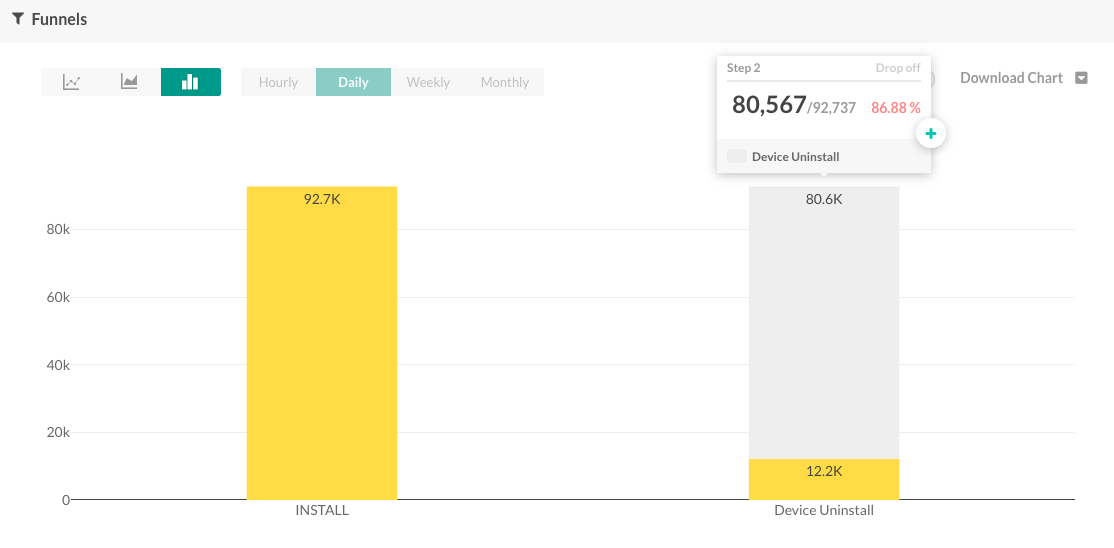
In this case, a little over 13% of the users uninstalled the app in the 7-day period we analyzed. If you switch from a bar chart to a line chart, you can see the uninstall trend over time.
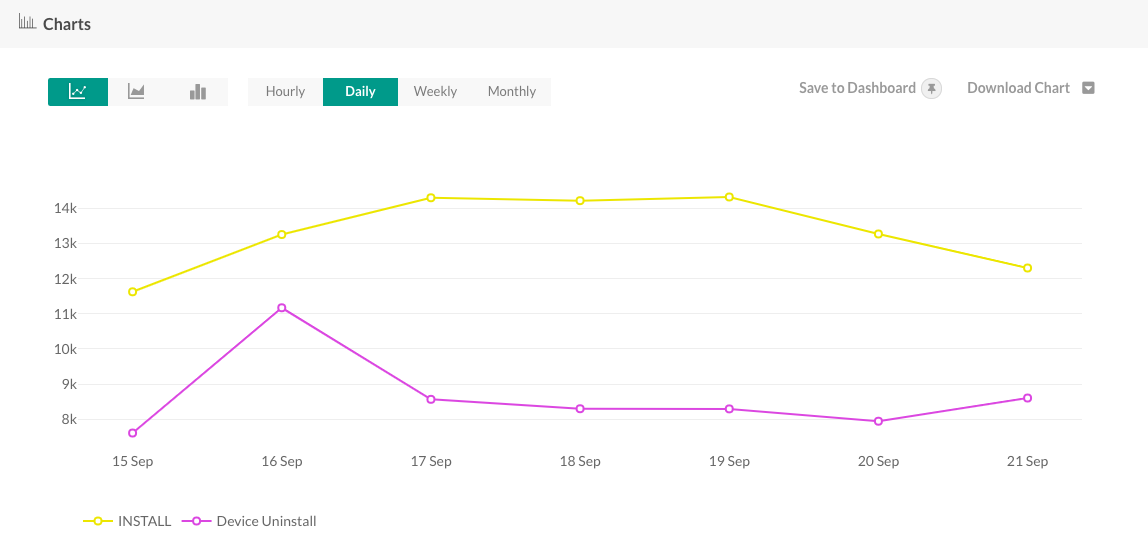
You can clearly see a spike on September 16th. To get to the bottom of it, analyze the engagement campaigns you ran during that period and look for correlations. This becomes a lot more seamless if you’re using a common platform for analyzing user behavior and running user engagement campaigns. Let’s also look at the retention cohort for this period.
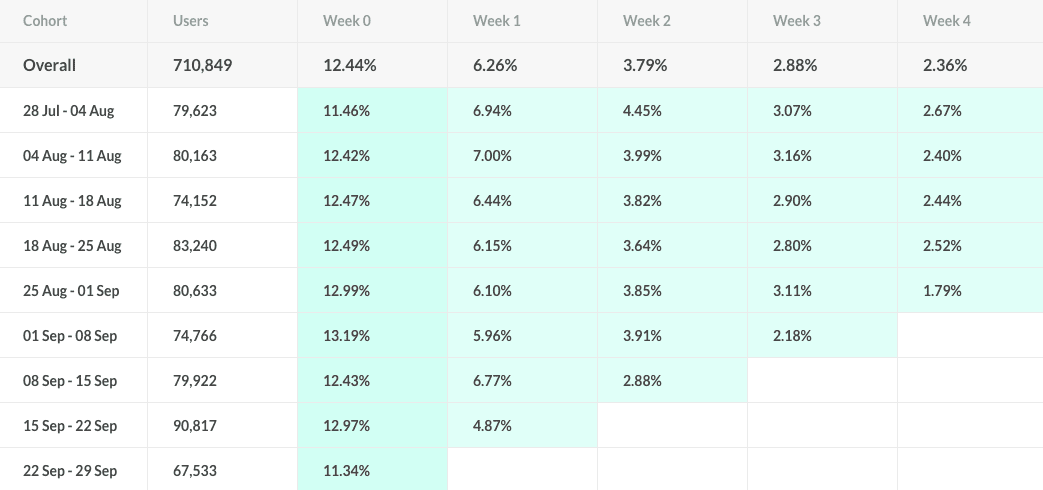
If you look at week 0 retention, you can see that a constant improvement across the first 6 cohorts. After September 8th, there’s a drop in this number. This could be because a high-performing campaign was stopped. Now let’s look at a line chart to get a better visual sense of the retention trend.
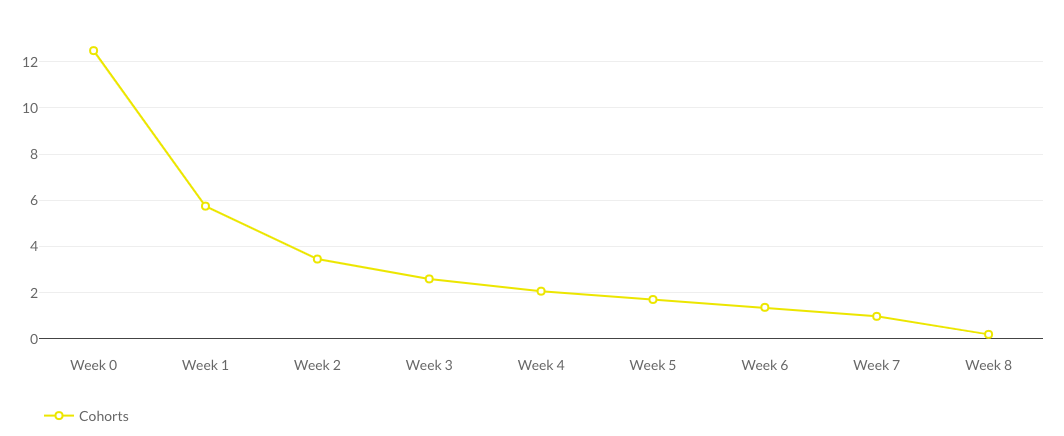
Typically, this is what the trend looks like. Most uninstalls happen in the first week and the likelihood of users uninstalling drops as they spend more time on it. Note that this chart does not show whether they opened the app. We’ll get to sessions in a bit. Let’s get a little more granular and look at daily uninstalls.
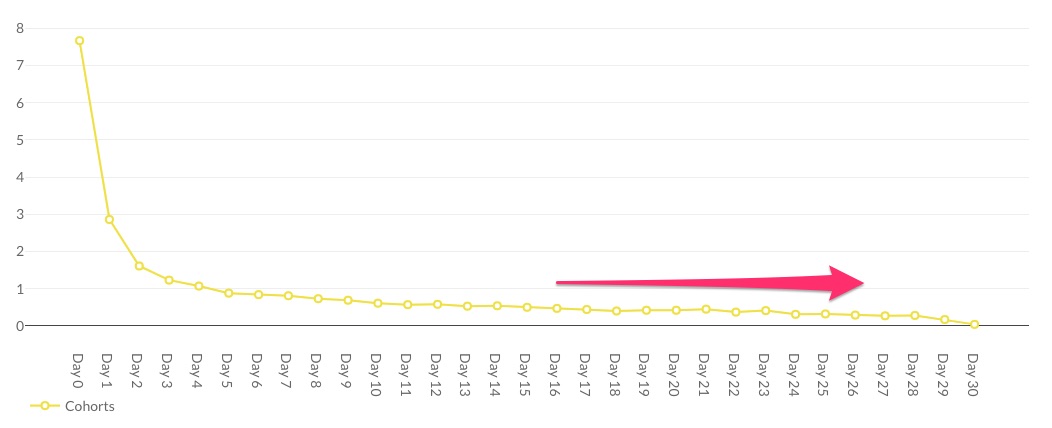
The majority of uninstalls happen in the first week and it pretty much flatlines after the second week.
This is crucial and we’ve noticed this across apps irrespective of their churn rate. Essentially, if you’re able to retain most of your users beyond the first couple of weeks, they tend to stay on.
What you’re looking for here, is anomalies. Anything other than a smooth downward curve needs further analysis. For instance, if you notice a spike in uninstalls on a particular day for a cohort, look for the campaigns that were run for those users. If you see this trend across cohorts, find the campaign in your user onboarding journey sent on that day.
To get to the root cause, dissect this further based on user attributes, behavior, or acquisition source. If you find a particular user segment or source that has a high churn rate, look at the campaigns that were targeted at those segments during that period. Let’s look at an example. 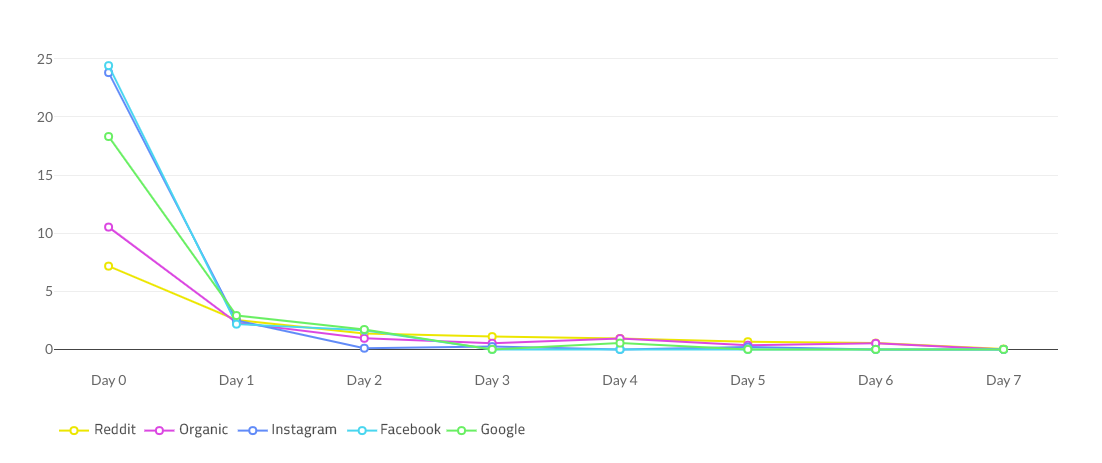 In this case, you can see that the users that were acquired from Facebook and Instagram have the steepest drop rate in the first two days.
In this case, you can see that the users that were acquired from Facebook and Instagram have the steepest drop rate in the first two days.
Perhaps the messaging for those campaigns need to be more transparent in describing the value proposition. Or you need to reassess your spending for those sources and their respective audiences.
It may also help to reinstall the app yourself to relive the onboarding experience from an end user’s perspective. Now that we have a general sense of our uninstall trends, let’s move on to the next step.
STEP 2: Finding out your app’s AHA moment
By now, you have a good sense of your churn. What you need to find out next is what makes your app *click*.
We know that the AHA moment for your app is the lightbulb moment when users discover its value. Let’s look at a few examples.
Facebook realized that if a new user made at least 7 friends in the first 10 days, they got hooked. For Twitter, it was when they followed 30 accounts, and for Dropbox – you guessed it – it was when they uploaded the first file. YouTube has evolved from optimizing for views to optimizing for watch time to maximize the time spent on their platform.
You most likely use some or all of these products, and you probably remember how they drove you towards these activities.
Finding the AHA moment for your app might require forming a few hypotheses on what the value might be. And then looking at data to find patterns that either validate or negate the hypotheses. Let’s take an example of an eCommerce app. The hypothesis here is that there should be a direct correlation between the number of transactions and the odds of retention. Let’s look at the data.
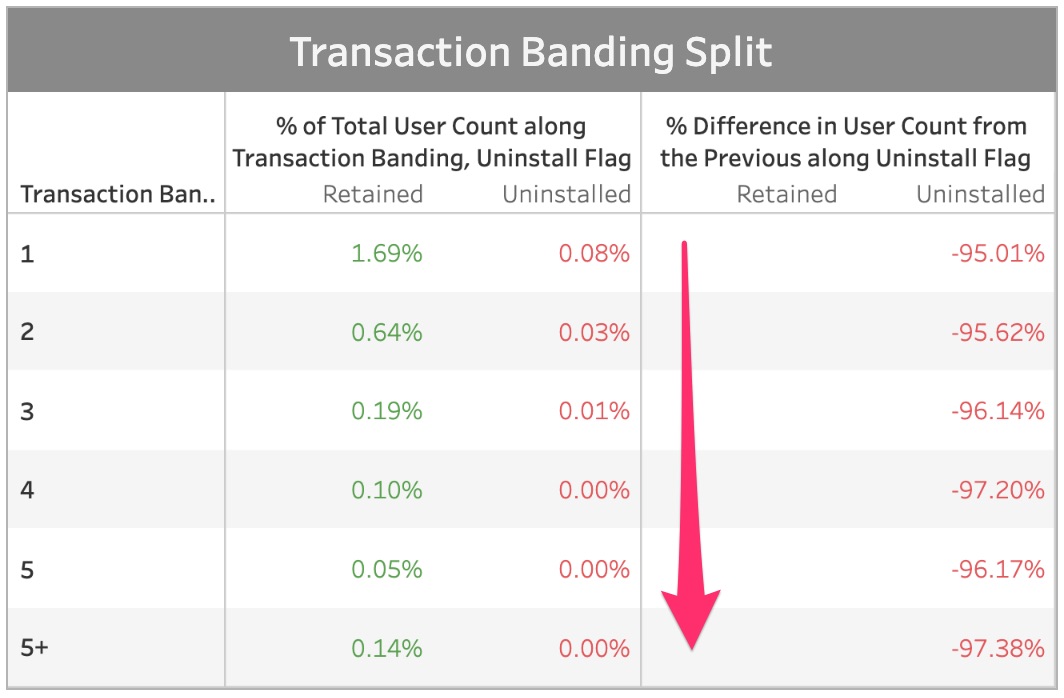
If you look at the data for the first 30 days, this rings true. The moment a user performs a transaction, the odds of them uninstalling drop under 1% (from 15% for the overall group). A theory could be that these users installed your app to use the first-purchase discount, or found a promo or coupon code that required them to install the app to redeem. Or perhaps they just wanted to buy something specific from you.
The thing to notice here is that at 3 purchases, the likelihood of a user uninstalling goes almost to 0. And at 4 purchases in the first month, it drops to 0. So there’s our AHA moment – Get your user to make at least 4 transactions in the first month.
Let’s split this up to see if we can uncover any more insights. We’ve pulled some Tableau reports through MoEngage’s Open Analytics to get a visualization. If you don’t want to reach out to your data team for this, you can use a tool like MoEngage Analytics but you’ll need to pull a few additional reports to get all this data.
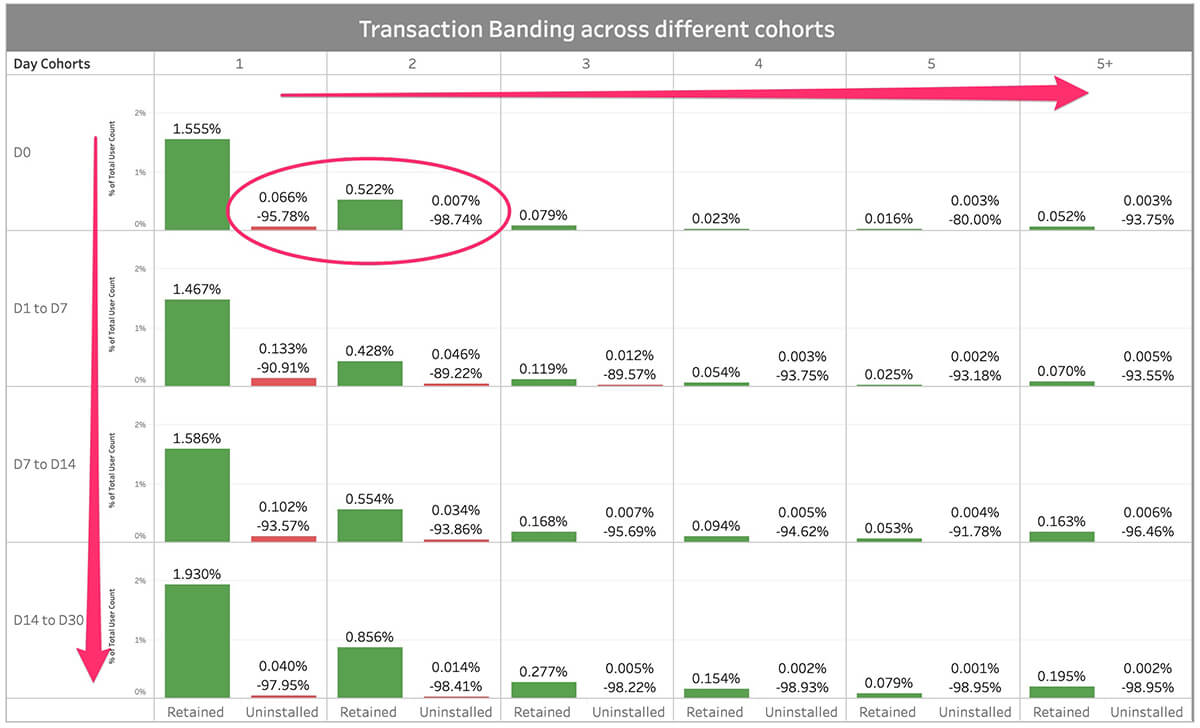
In this report, the rows represent day cohorts: Day 0, D1 to D7, D7 to D14, and D14 to D30. The columns represent the number of transactions or purchases.
The green and red bars show the percentage of users and the numbers right above the red bars depict churn (the more negative the number, the less the churn). For example, about 1.6% (1.555% + 0.066%) users performed 1 transaction on D-0. If a user completed 2 transactions on D-0, the odds of them staying went up by about 3 percentage points.
Turns out, if you get them to stay on for the first 14 days, the odds of them uninstalling the app by D90 drop to about 1%. Especially if they’ve made 4 or more purchases in those two weeks. This reinforces our hypothesis of the AHA moment.
For the most part, the likelihood of churn reduces as you go from left to right with a few minor exceptions. It’s fairly safe to conclude that there’s a direct correlation. A caveat to that is the first row. If you can drive a purchase or two on Day 0, do it. The percentage of users completing 5 or more transactions is going to be minuscule. Next, let’s look at another factor. This time, pull a report based on session count.
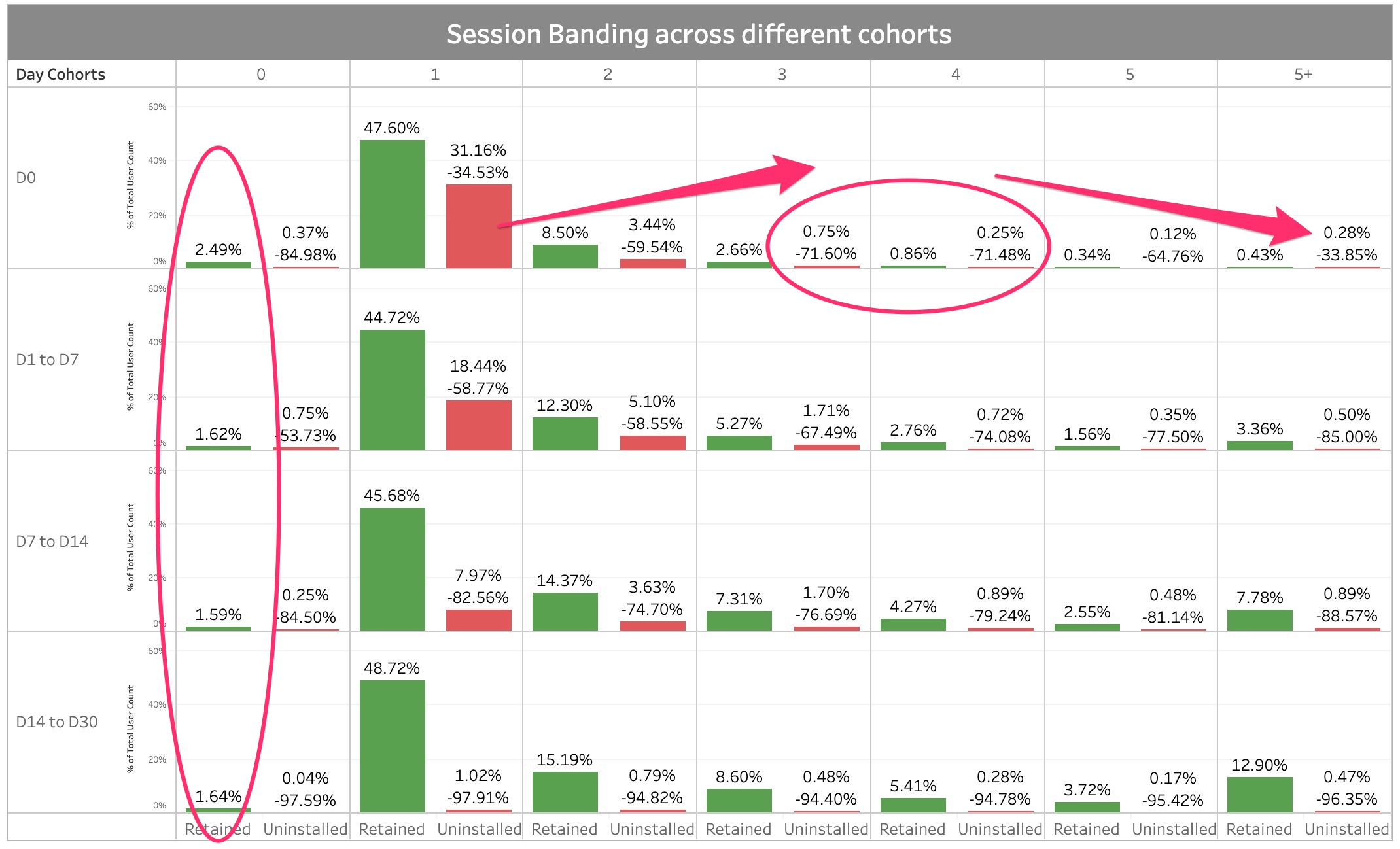
When you go across the D-0 cohort, the retention percentage increases from 1 to 3 sessions. After 4 sessions, this number tends to decline gradually. This time, with a 20X sample size, compared to the previous chart and a more consistent correlation.
In other words, it’s not in your best interest if the user opens the app too many times on the day they install it. Anything above 4 starts to hurt your prospects of keeping the user for long.
Although the mobile app retention for users who opened the app once on D-0 seems low (34.53%), that number might be skewed because almost half the users fall in this bucket. So, it’s bound to include users who were expecting some other capabilities or just decided to uninstall the app after looking at it once for some reason. It could be a misleading message on your website or ad copy that you might want to reconsider. Split the cohort based on factors like demographics and sources to dig deeper.
If you look at the bottom-left corner, you’ll notice that once you keep the user for the first 14 days, they pretty much stay around beyond 90 days, irrespective of the session count between these days. Same as the transaction cohort.
In conclusion, the AHA moment here is when a user completes 4 transactions in the first 30 days. You can dig deeper into your user data to find if there’s a specific purchase amount threshold or some other usage attribute that has a consistent correlation with retention.
NOTE: There’s a glaring opportunity hidden in these numbers. Most of all the 0-session users didn’t uninstall either. So it’s possible that they forgot about your app after installing it. If you see a trend similar to this, you would want to start engaging these users and converting them before working on acquiring more users.
Get actionable data-backed insights to optimize your app user engagement strategy.
DOWNLOAD REPORT
STEP 3: Check the conversion to AHA moment
Finding your AHA moment is a one-time activity. You might need to revisit it once or twice a year but it stays the same for the most part. You would, however, want to check how many users are experiencing it on an ongoing basis. In our case, we’ll look at how many users completed 4 purchases within the first month. You can create a user segment with these conditions for easy tracking.
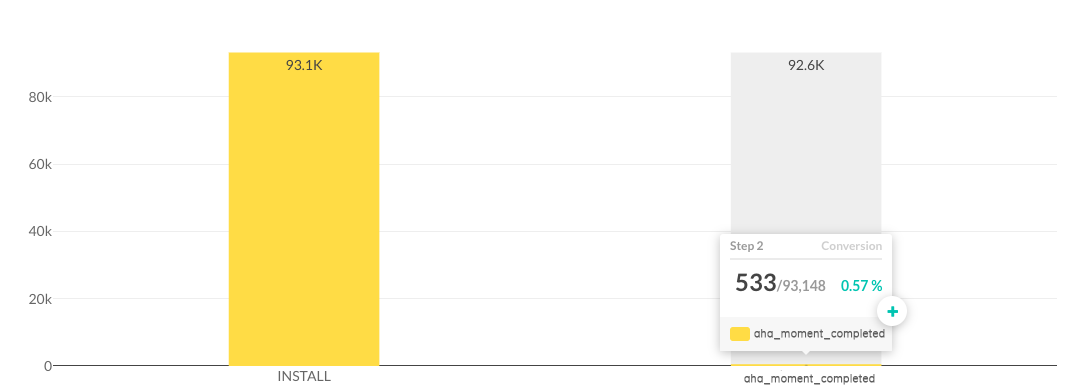
Like the previous steps, split the segment that did not convert here to find your least converting high volume segment. Then you can start running campaigns to drive them to the AHA moment as quickly as possible.
STEP 4: Split uninstalls by engagement frequency
We’ve seen that too many sessions too soon is not good. But is there such a thing as too many notifications? Let’s see.
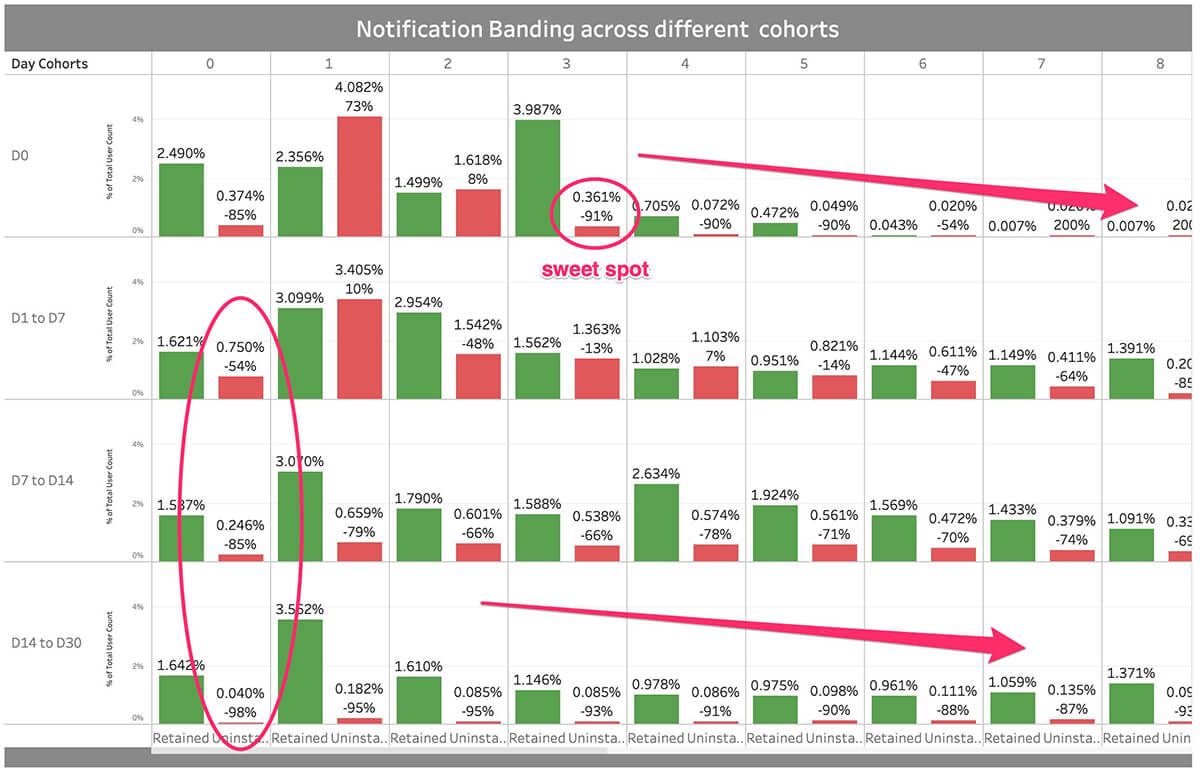
While the number of times an average user opens your app and the number of transactions they perform might not be completely under your control, something else is. How many notifications you send can make or break the experience for a user.
Clearly, sending 3 notifications on D-0 is the sweet spot. These users were retained not only through their first day but throughout the 30-day observation period. Anything more than that and you run the risk of driving them away.
Pay attention to the 1-notification segment on D-0. The churn rate for these users was through the roof. How do you avoid this? You obviously can’t send them 3 notifications without sending them the first one. It might be weeding out users who don’t think the app is for them. On the other hand, it might be asking for too much information too soon.
The actionable insight here is to look at the typical first notification and ask yourself whether it’s relevant. Personalize it based on the user’s journey so far and make it highly contextual and value-driven.
Let’s see what happens if you do not send them even three notifications on D-0. It gets extremely difficult to control churn in the first week (D1-D7). Users who get 8 notifications have a fair chance of being retained. Presumably, these are users who made a purchase and got transactional notifications like order confirmation and delivery status updates. But for all you know, you’ve already lost the potentially loyal customers if they did not hit the sweet spot on D-0.
The CACE framework helps you drill down and understand the biggest root cause of your user churn.
Although we’re big advocates for data-driven decision-making, nothing beats talking to your customers directly. Asking your most dedicated users what they find valuable will give you some great qualitative insights. Likewise, understanding why someone churned will help you further validate your hypotheses. Consider using surveys and feedback forms to do this at scale. When you have these insights, you can use data to validate them.
Learn app retention best practices to run and execute high-performing user engagement campaigns.
DOWNLOAD REPORT
Some proven tips for reducing Churn
Once you have a good grasp of your churn and uninstall trends and know what your AHA moment is, you can act on it. Let’s look at a few steps you can take in order to reduce churn.
1. Map out and automate the user onboarding journey
As we’ve already seen, for most apps, a majority of uninstalls happen in the initial few days. Starting with an 80/20 approach (the Pareto Principle) and getting users hooked to your mobile app early on is a major way to combat churn.
Tokopedia realized that the key to reducing churn was to engage users early in their lifecycle. They created cross-channel user journeys to optimize the onboarding experience of their new users. Not only did they reduce their first-month churn by 60%, but their app is also currently used by over 80 Million MAUs and growing.
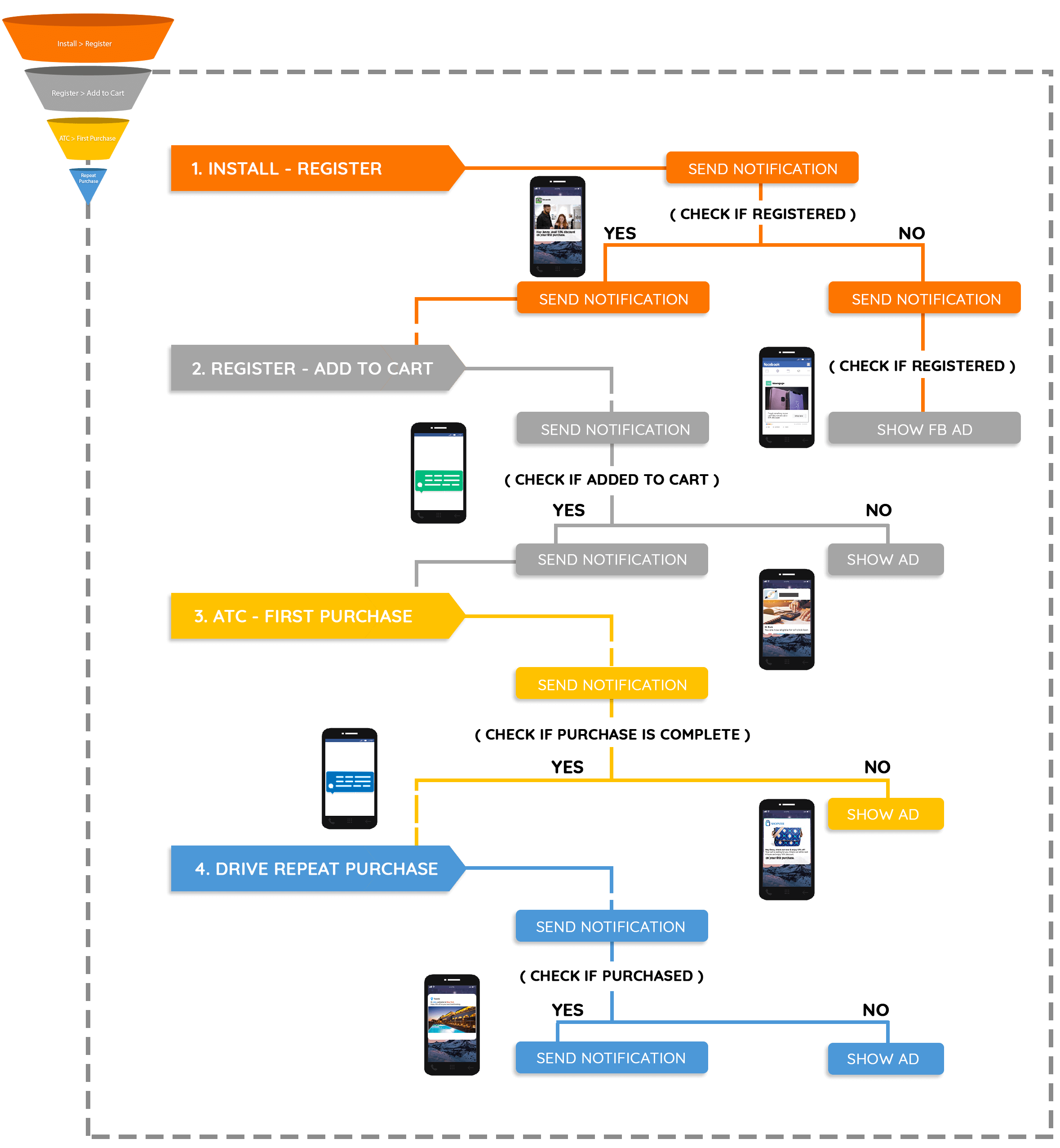
Bonus Case Study: How Tokopedia used MoEngage Flows to reduce their first-month churn by 60%
2. Drive users to the AHA moment in the most optimal time
Now that you know what your app’s AHA moment is, your goal should be to make sure all your users experience it in the most optimal time after they install the app. Help them realize the value your app offers upfront.
Since you also know the optimal engagement frequency from step 4, avoid bombarding users with too many push notifications too soon.
3. Use incentives and gamification to drive adoption
You can incentivize users into completing the first transaction with discounts and cashback. Most users never complete even one transaction. Give them some freebies and sweepstakes to get them over the hump.
Using game mechanics to further hook users. Include rewards and let them win badges based on usage. Depending on your app’s AHA moment, this could be usage frequency, the purchase amount, or another parameter. Users will feel compelled to get back to the app if they know that they’re just a few transactions away from the next milestone.
4. Educate users and help them get the most out of your app
Your app might include features that offer a lot of value. But if they stay hidden in some dark corner or are hard to discover, most users may never know they exist.
Set up tutorials and cues to show them around. Make useful features easy to discover and make sure users have a seamless experience navigating your app. You can use contextual push notifications to enable discovery and drive adoption depending on the features a user has already tried.
5. Give users a personal touch
There’s something about brands like Netflix, Amazon, and Spotify that we, as consumers, love. The experience we have on these platforms feels like it’s cut out specifically for us.
If your competitors offer similar, if not superior, feature sets at a comparable price, you have to earn the loyalty of your users. Give them a hyper-personalized experience and remove any kind of friction. Analyze user data and understand their behavior and latent needs. Recommend products that they didn’t even know they wanted when they’re too busy to research. They’ll be hooked for life and become more forgiving of minor glitches and goof-ups in the future.
6. Make it easy for users to get help
You might have made all of your best features easy to discover, but some users might still need help. Include a way for them to find answers to FAQs or reach out to your support team without leaving your app. You can even include a chatbot that keeps them engaged and collects the necessary context while a support rep is assigned to the issue.
Your users need solutions to problems as quickly as possible. Don’t keep them waiting, or worse, make them go to your website to find support articles. Think “mobile-first” as opposed to “mobile-also”.
Lastly, keep going back to the data to see how your user engagement efforts are faring and course-correct if required.

Here’s What You Can Read Next |







